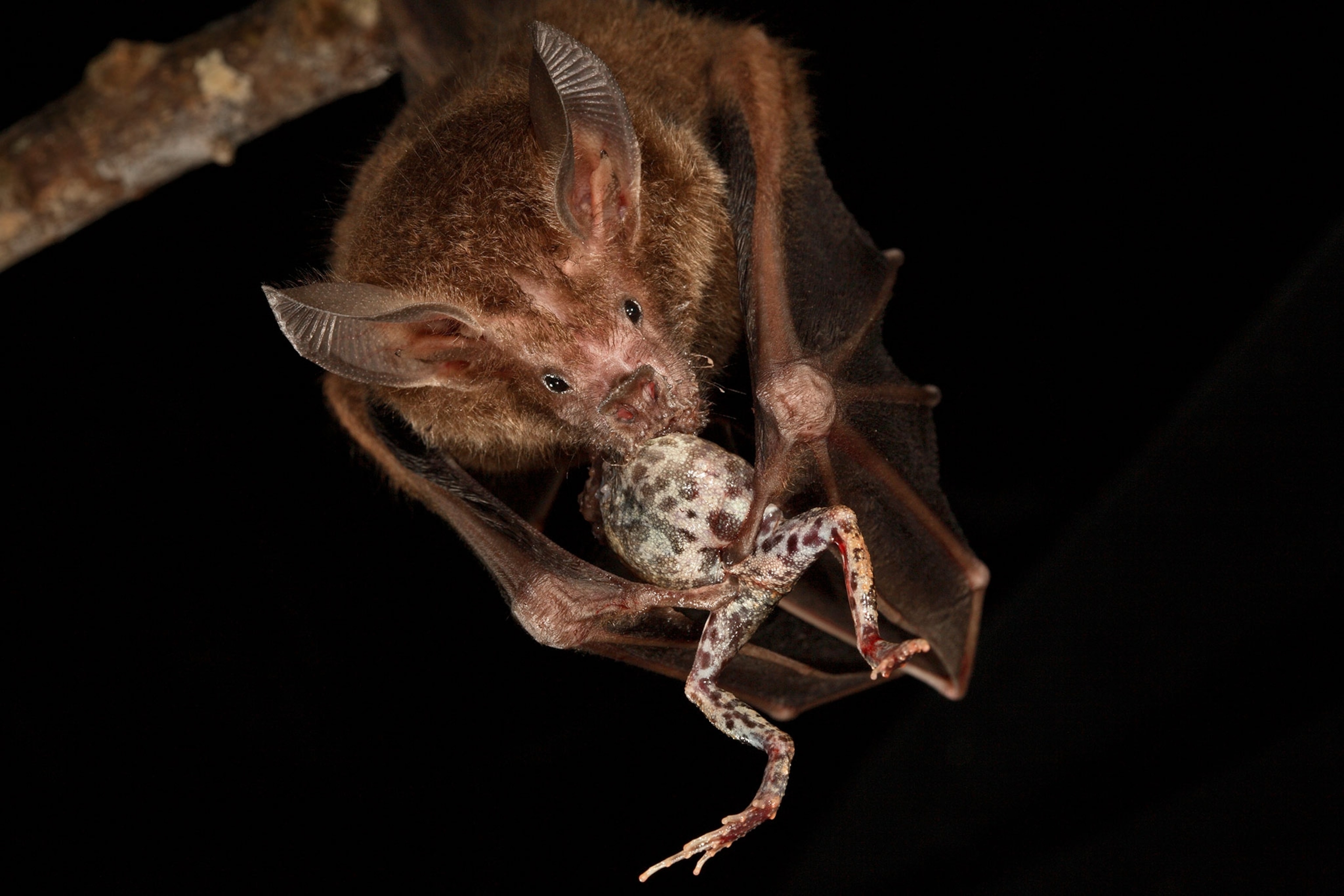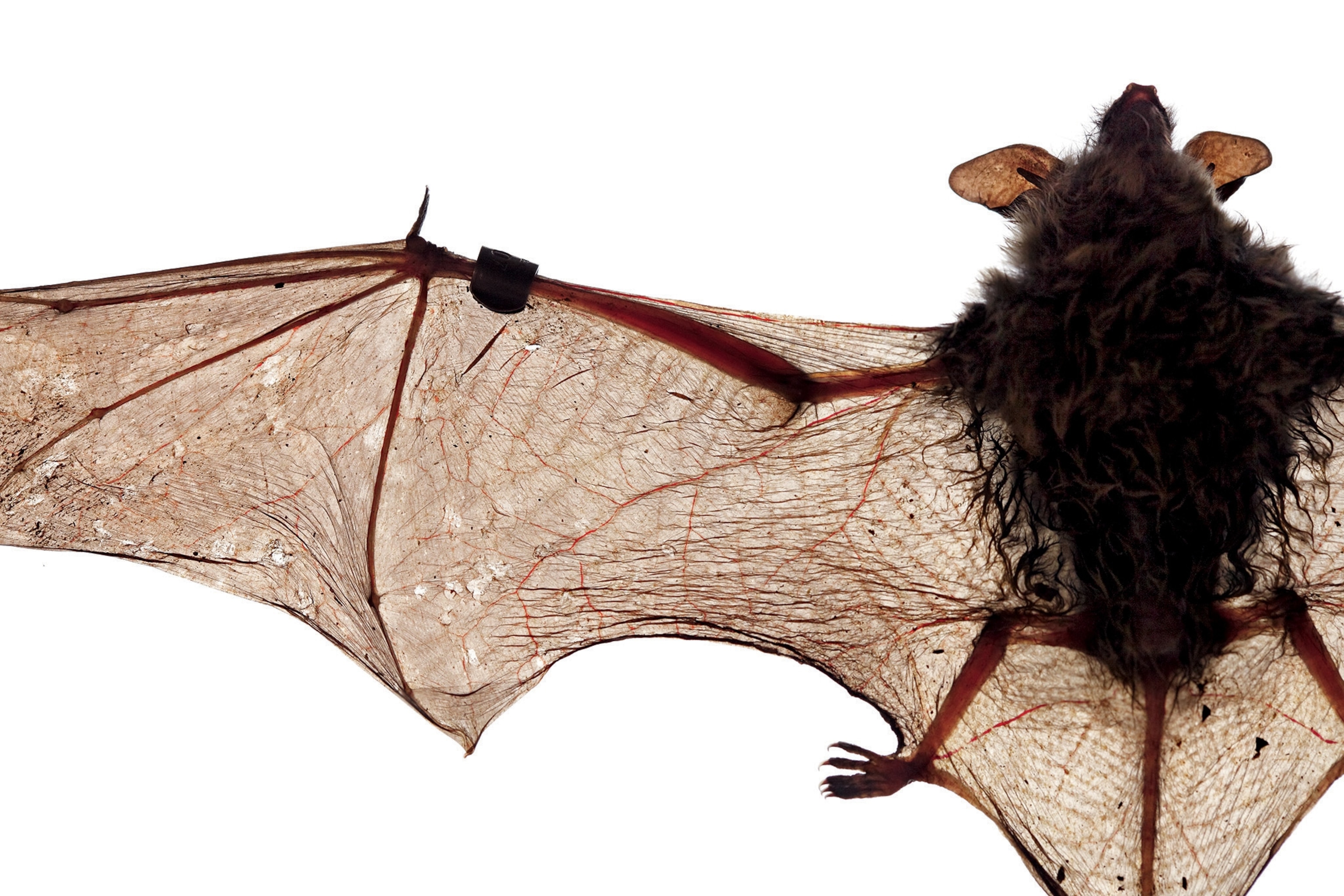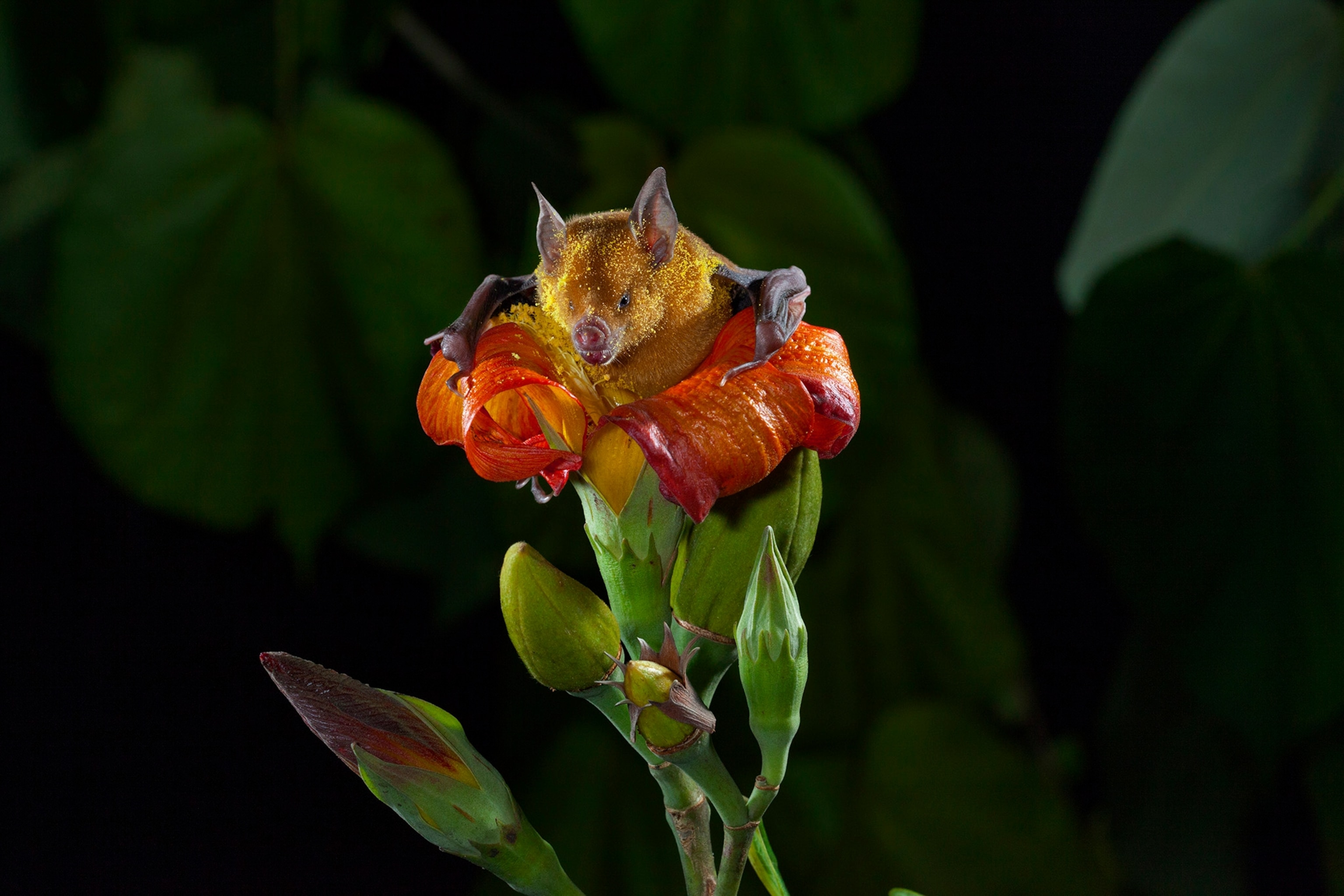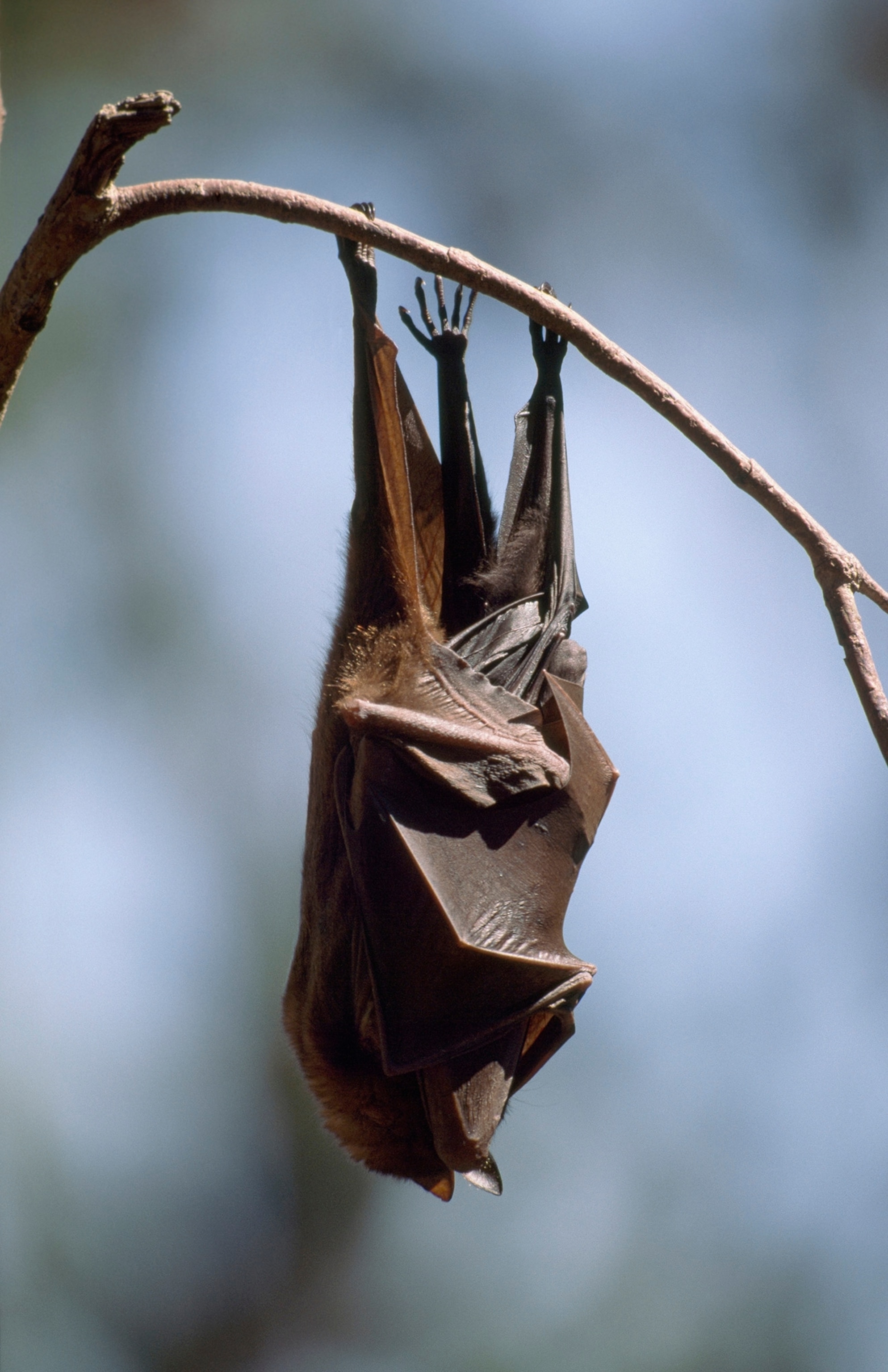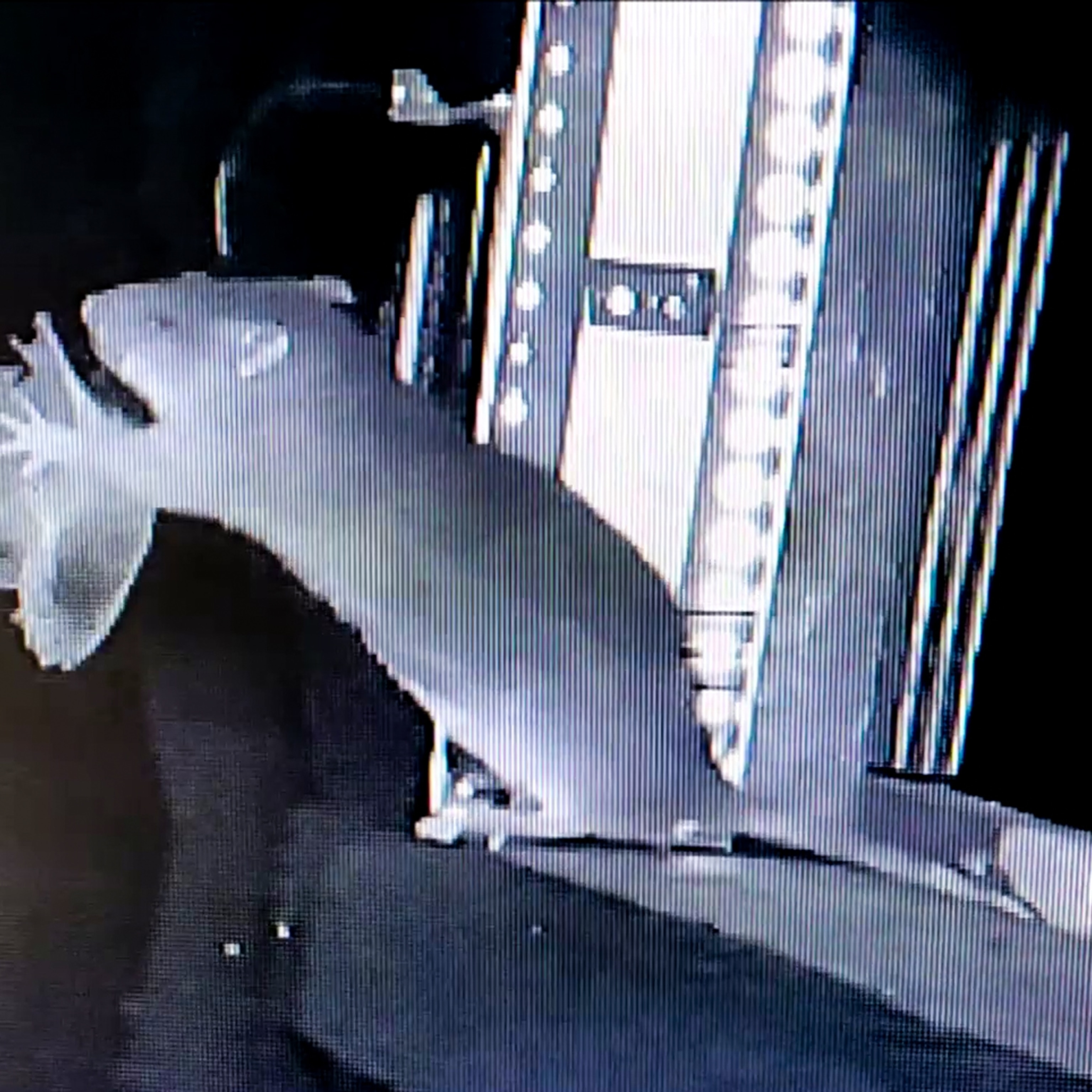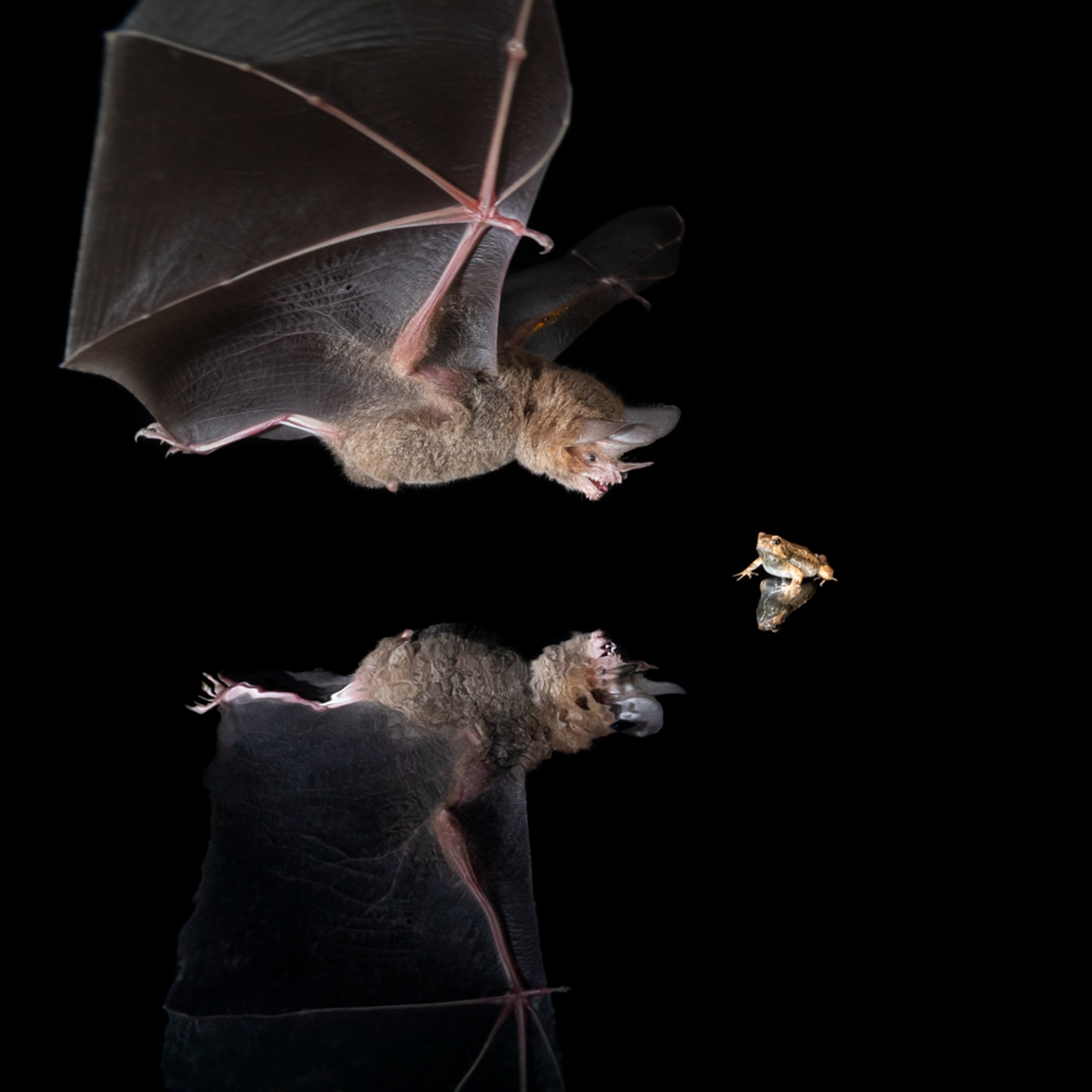As creatures of the night, bats face a unique challenge—locating and hunting down prey in the pitch black.
The flying mammals have evolved one excellent solution: Echolocation, in which they send out sound waves that bounce off prey and pinpoint their whereabouts. But this innate superpower represents only a fraction of the amazing and sophisticated ways bats get food. (Get the facts on how climate change could impact bat echolocation.)
Now, scientists have combed through previous literature to compile a master list of these dark talents, published recently in the journal Functional Ecology.
While many studies have looked specifically into the tools and behaviors bats use to find prey, a more thorough overview of how the predators use their various senses to hunt has been lacking, says study leader Rachel Page, a staff scientist at the Smithsonian Tropical Research Institute in Panama.
“Despite decades of research, we still know fairly little about the underlying sensory and cognitive ecology of most bat species,” of which there are at least 1,300, explains Page. “Because bats are flying night animals, difficult to observe without specialized equipment, their intense study has been fairly recent.” (Learn about the most prevalent bat myths.)
Bats’ sensory skills, they found, range from vampire bats that detect the breathing patterns of an individual animal to the Natterer’s bat, which is drawn to the sound of copulating houseflies.
Overall, the research suggests bats are more gifted—and less understood—than scientists had ever appreciated, she says.
I only have ears for you
The researchers pored through studies that focus on how insect-eating and carnivorous bats rely on information from either prey or other bats to find food. The team then evaluated the sensory adaptations that support these particular hunting techniques, and examined the challenges and benefits of each approach. (Read why some bats only hunt during the day.)
For instance, when echolocation doesn’t work well—for instance in small, closed spaces, like underbrush, where it’s hard to target prey—bats will passively listen for subtle sounds.
Take the common vampire bat, which feeds entirely on blood surreptitiously gleaned from sleeping mammals. The bats have neurons that only fire in response to the sound of an animal breathing, which is how they locate prey. These bats, found in Central and South America, can even recognize the breathing patterns of a specific host, and return to that same animal, such as a cow, night after night to feed.
“Vampire bats are usually quite small compared to their hosts—there are dangers of getting trampled or squashed, or of the host waking up during the process and defending itself,” says Page. “It’s possible that once they’ve found a host that they’ve successfully fed from, the safest strategy is to go back to that same host.” (Read how vampire bats can sense veins.)
The New Zealand lesser short‐tailed bat is perhaps the master of hunting amid clutter. These “walking” bats spend 40 percent of their foraging time on the ground—more than any other bat—carefully listening for the sound of insects moving through leaf litter and using tubular nostrils to sniff out the insects’ location.
Nosy nellies
Some bats exploit their prey’s noisy, nighttime broadcasts, eavesdropping on mating calls like someone listening in on a CB radio.
Fringe‐lipped bats of Central and South America, for instance, find and pick off túngara frogs by zeroing in on the raucous singing of males, which congregate at ponds. By focusing on these mating calls, fringe-lipped bats can find places where frogs gather—and grab plenty of dinner. (This whispering bat evolved to trick prey.)
Natterer's bats, native to Europe and the Middle East, are literal buzzkills, attracted to the distinct buzzing sounds of a pair of copulating houseflies—a strategy that gives them a bigger meal.
Dinner bells
Other bats listen to their fellow night flyers to receive hints on where food is located, gravitating toward the sound of other bats’ echolocation pulses.
The lesser bulldog bat of Central and South America keys in on other bulldog bats’ “feeding buzzes”—high-intensity echolocating that bats make as they bear down on insects. This leads the bulldog bats to a temporary bug bonanza swarming over a body of water—and spares them the effort of searching for food.
“What’s really interesting,” notes Page, is that “bats will eavesdrop on the echolocation calls of other bat species as well.” (Read how a bat jams another bat’s sonar to prevent it from getting food.)
Tip of the iceberg
Yossi Yovel, a zoologist at Tel Aviv University who wasn’t involved in the study, notes it’s a “very good and comprehensive review of the field.”
Yovel was also impressed how the scientists broke down the hunting strategies into three key groups: listening in on prey movements, exploiting prey communications, and taking cues from other bats hunting nearby.
Page emphasized that her research is only a first step. “Bats are extraordinary animals, beautifully diverse, highly social, and cognitively flexible,” she says.
“We are just at the beginning of understanding the patterns underlying their diverse foraging strategies and the ways in which they recruit information to find prey.”
